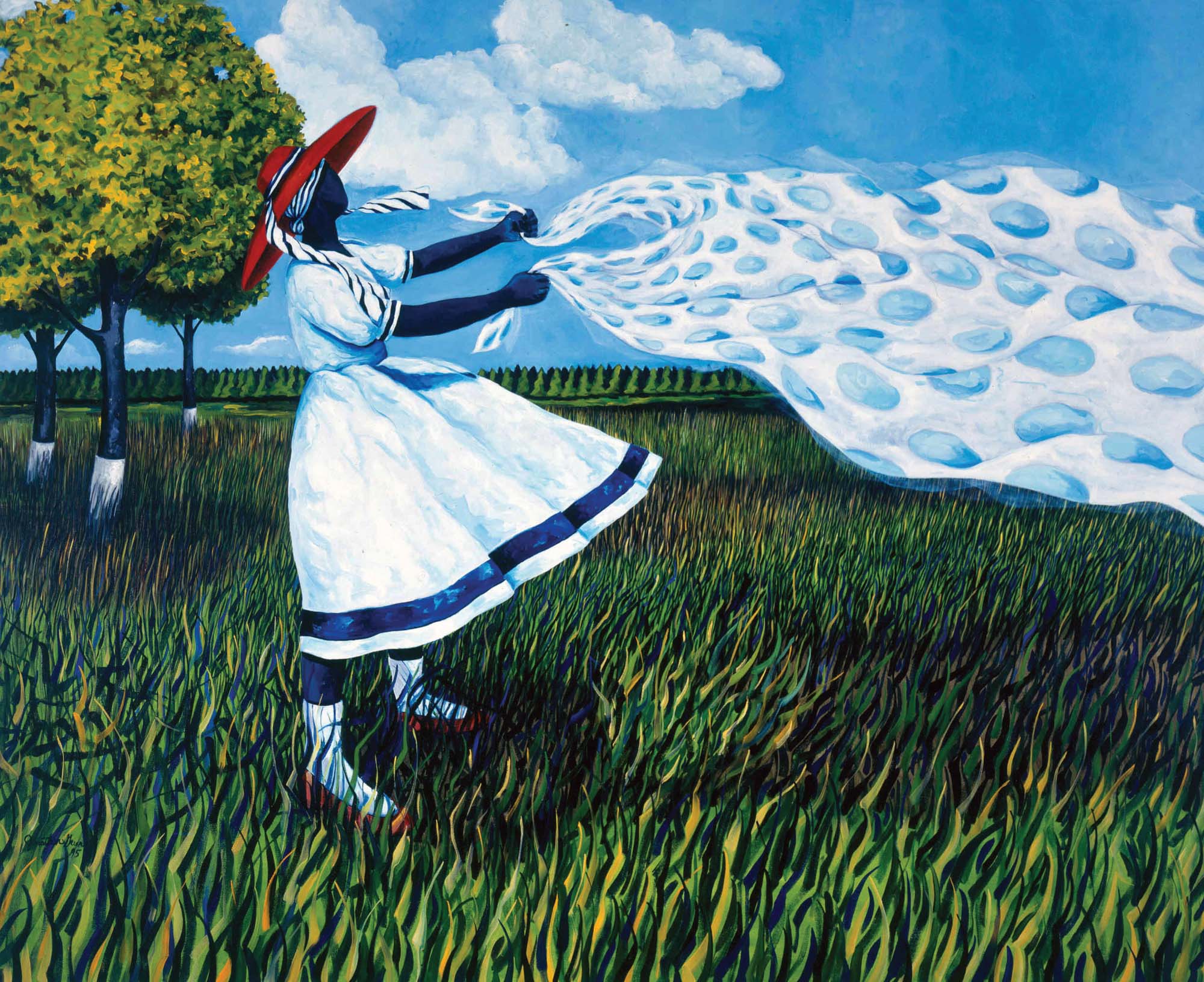The Subversive Beauty of Jonathan Green
Story by Stephanie Hunt
Photographs by Lindsey Shorter
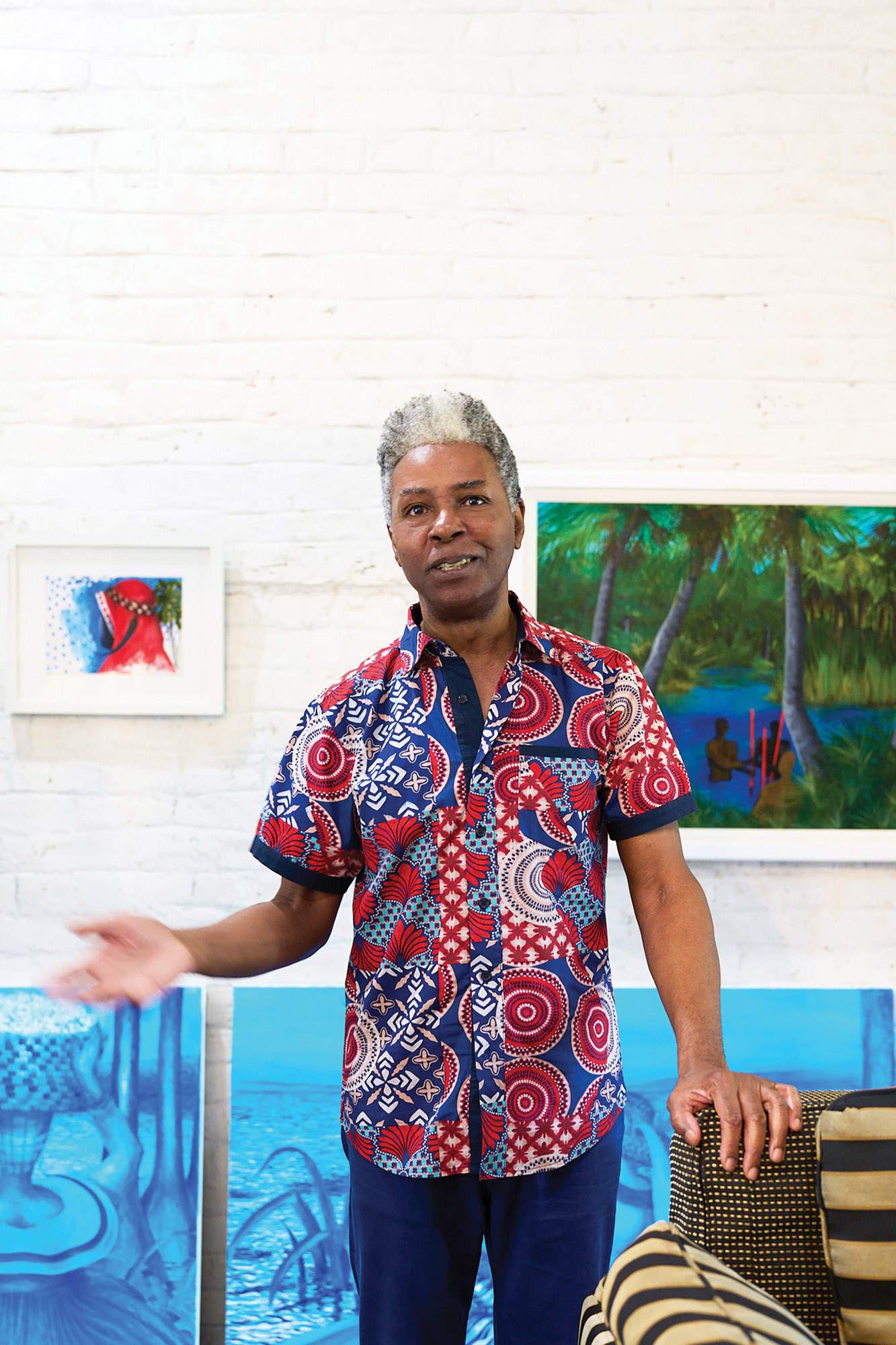
One image stands out at Charleston’s new and long-awaited International African American Museum. Amid the powerful exhibits conveying the heart-wrenching horrors that unfolded on this site—Gadsden’s Wharf, where hundreds of thousands of captive Africans were forced into enslavement—a Jonathan Green painting delivers a different kind of gut punch. The work, titled Beach Dance, presents a Gullah woman in glorious all-white, her skirt billowing in the wind, a big hat with flowing ribbons crowning her head, polka dots of ocean blue adding bursts of cheer. The woman’s shoes lay discarded in the bottom corner as off she sashays toward the water, a sense of freedom and joy unmistakable in her buoyant movement. While the museum chronicles the brutal inhumanity of slavery, Green bears witness to the resplendent humanity of the enslaved. Like those discarded shoes, he unlaces layers of victimhood and turns the narrative upside down. This woman, like his grandmother and all the Gullah Geechee women who raised him in Gardens Corner, South Carolina, knows and celebrates her autonomy. She is beautiful and beloved; she is dancing.
Over the nearly five decades that the native South Carolinian has been producing work, Jonathan Green’s style remains consistent and recognizable. Jubilant color, joyfulness, and lightness are paramount. Scarves tango in the sea breeze. Shirts hung on a laundry line morph into artful, swaying banners. Humble church pews and regal church ladies echo a call to worship. Farmers and fields where grass grows tall and black crows rise up against a royal blue sky become more than a rural backdrop; they represent resilience and sovereignty. And fashion and style are always at the forefront. Kin, community, praise, power, light, nature, water, history, memory, reverence—these are the elements of Jonathan Green’s art.
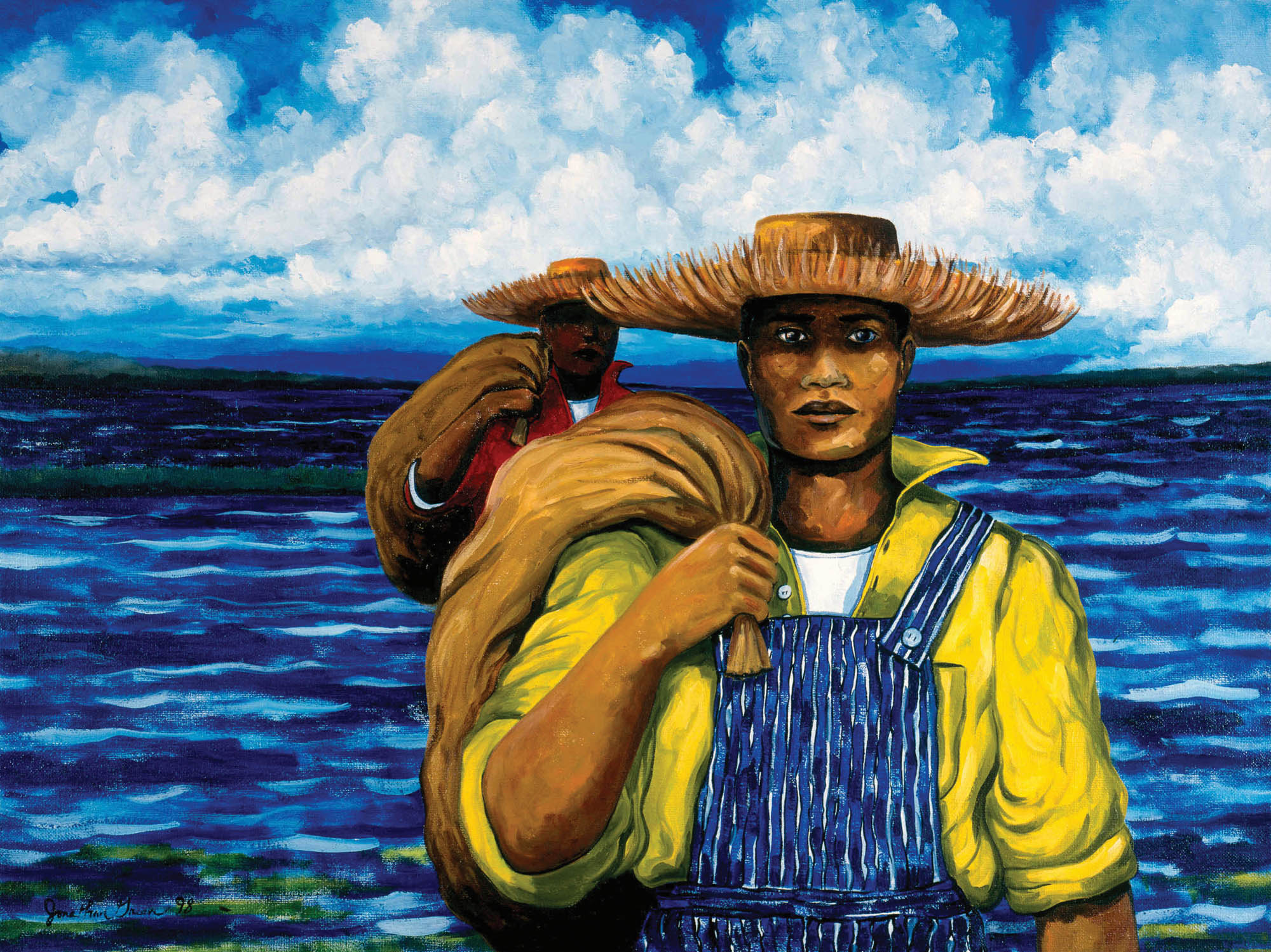
His two books, Gullah Images and Gullah Spirit: The Art of Jonathan Green—both published by the University of South Carolina Press—are testimony to his singular vision and intention: to capture and honor his birthright. Or in the words of the legendary Pat Conroy, Green’s paintings are saturated with the “mythic grace and nameless grandeur” of the Gullah culture. As his numerous awards (among them, the NAACP’s Key of Life Award and South Carolina’s highest honor, The Order of the Palmetto) and international renown suggests, he is to canvas what Miles Davis is to music, what Toni Morrison or James Baldwin is to prose, what Alvin Alley is to dance. But you’d never know it by talking with him.
Green, a graduate of the School of the Art Institute of Chicago, is as soft-spoken in person as he is vibrant in palette—a consummate gentleman, elegantly dressed, deeply kind and generous, and (as a true child of the South) demurely polite. But he’s also an intellectual force field and a man with a mission. “I’m trying to set the record straight,” he says.
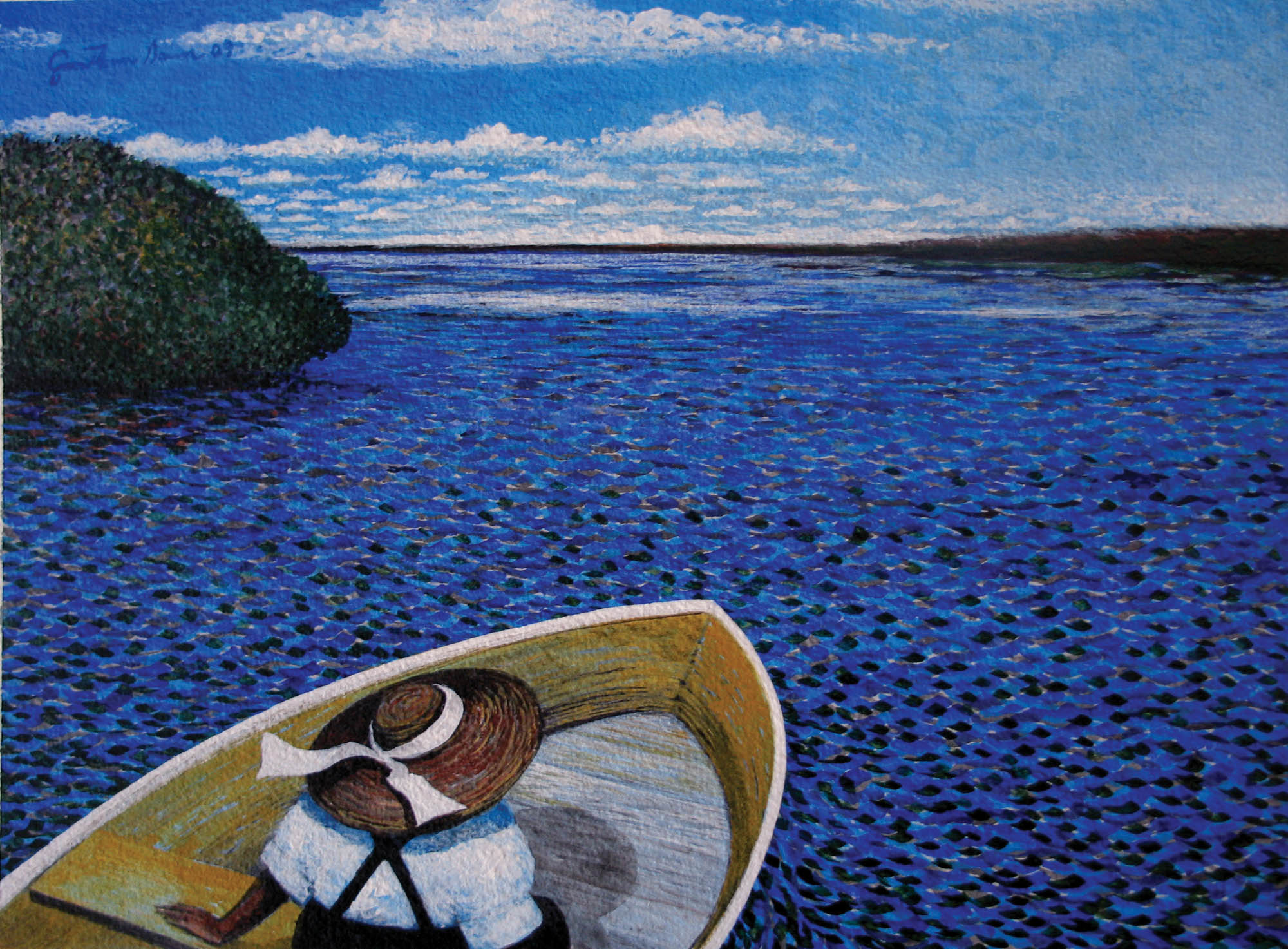
In his downtown studio near The Charleston Place hotel, Green, an improbable sixty-eight (a slight, handsome tinge of gray is the only hint he’s not thirty-eight), is at work on a new series, several canvases in early stages washed in a base layer of vivid indigo blue. “This is how I start, with the color that warded off evil spirits and designated the house of a healer. Using natural, living paint that is so connected to African mythology is a way to enter the past.” Plus, he adds, “It gives the canvas such vibrancy.” Against that blue background, outlines of women are beginning to emerge—two balancing baskets of flowers on their scarf-wrapped heads, one ferrying a small boat loaded with flowers headed to the market.
His inspiration for this new series? Green picks up an old black-and-white image from the Charleston Renaissance era of the 1930s, depicting Charleston’s Gullah flower ladies in sepia quaintness, a photographic version of isn’t that nice? Brushstroke by brushstroke, he’s out to rebuff that genteel lore and misguided representation, replacing it with an air of self-sufficient splendor. “These were working women. They were farmers; they planted, harvested, gathered, and transported their flowers to the city in their canoes. They were proud entrepreneurs—just look at how they dressed,” he says.
Green’s art is undeniably visually pleasing, uplifting even, but as that indigo base layer suggests, a subversive undertone is at work.
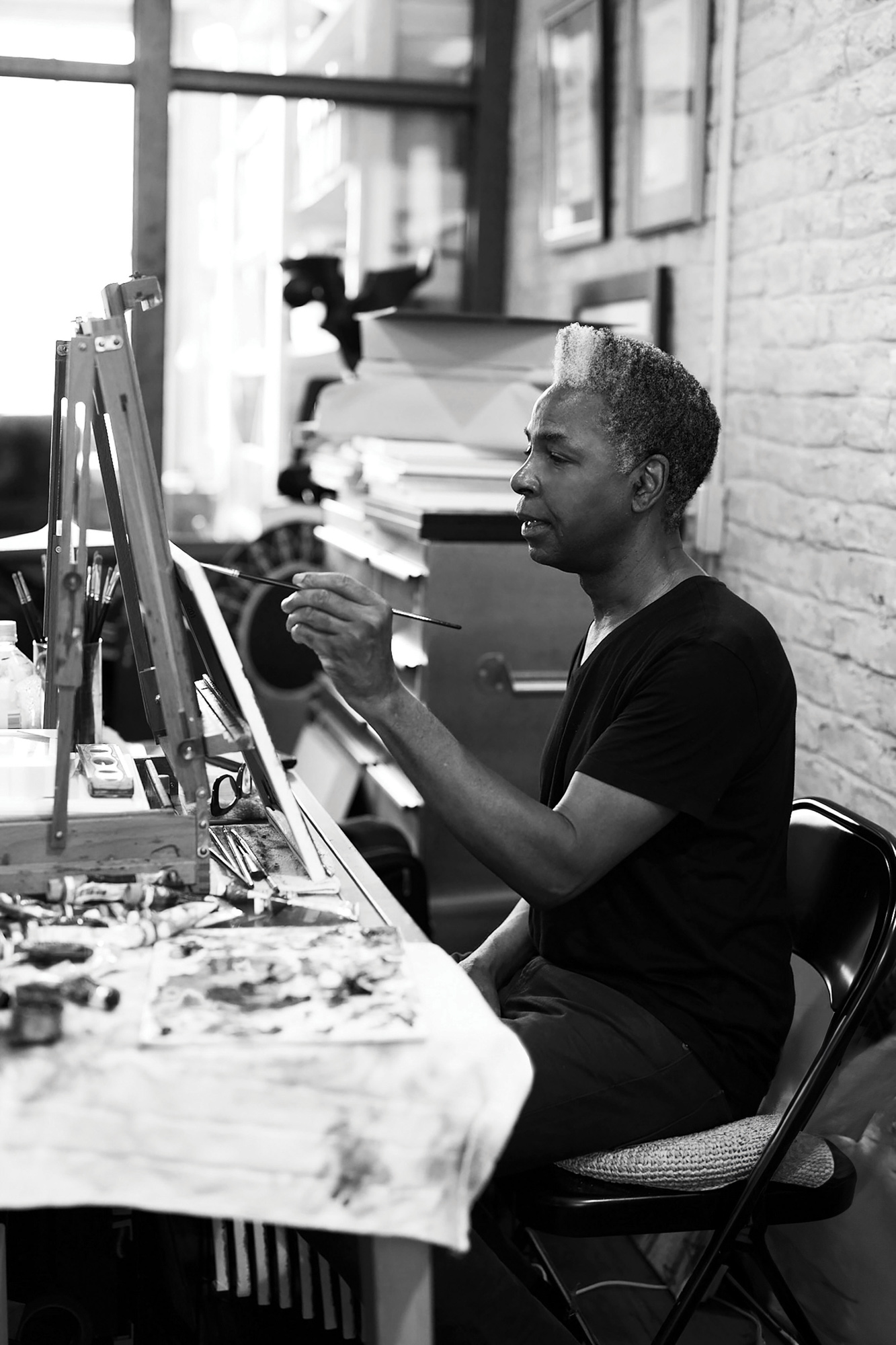
Beauty draws you in, and truth trickles out—the truth of the astonishing architectural, engineering, and agricultural legacy left by enslaved people from Africa, i.e. those who created the wealth that established the Carolina Lowcountry as a colonial powerhouse. All the things that drive Charleston’s tourism industry today—its plantations and gardens, the city’s architecture, its okra and shrimp and grits, “none of it would be here if not for the contributions of my African ancestors. I have so much to be proud of,” he says. And his colorful canvases, represented in museums around the world and in private collections in all fifty states, are his nod, his thank you.
Green’s reach goes beyond paintings and his popular calendars, prints, and other merchandise. His art has inspired ballets, opera, film, the set design of Spoleto’s Porgy & Bess, fashion, children’s books, public art installations, and educational endeavors like the Lowcountry Rice Culture Project, among other things, and soon, a new cultural and research institution will honor his broad, expansive legacy. The Jonathan Green Maritime Cultural Center is underway at the University of South Carolina Beaufort, not far from where Green was born and raised, where he won first place in a county art fair as a fifth grader, where he graduated from high school.
“The center will tell the story of African American maritime history, a story that really hasn’t been told. Gullah Geechee culture stems from maritime communities in Africa—it’s in the water, of the water, on the water,” says Dr. Kim Long, a professor of interdisciplinary studies at USC-Beaufort, who is spearheading the center alongside esteemed co-chairs Dr. Johnnetta Cole, the former president of Spelman College and Bennett College and former director of the Smithsonian’s National Museum of African Art, and Dr. Harris Pastides, former president of the University of South Carolina. Indeed Green’s prolific body of work is integrally tied to bodies of water, to those whose history and livelihoods are entwined with Lowcountry creeks and waterways, flooded rice fields, the vast Atlantic. “The fact that the University wanted to build a museum in Jonathan’s honor speaks to the magnitude of this man,” adds Long. “Jonathan approaches art from a scholarly and historical perspective, and he is methodical in his intent to maintain and preserve a unique culture.”
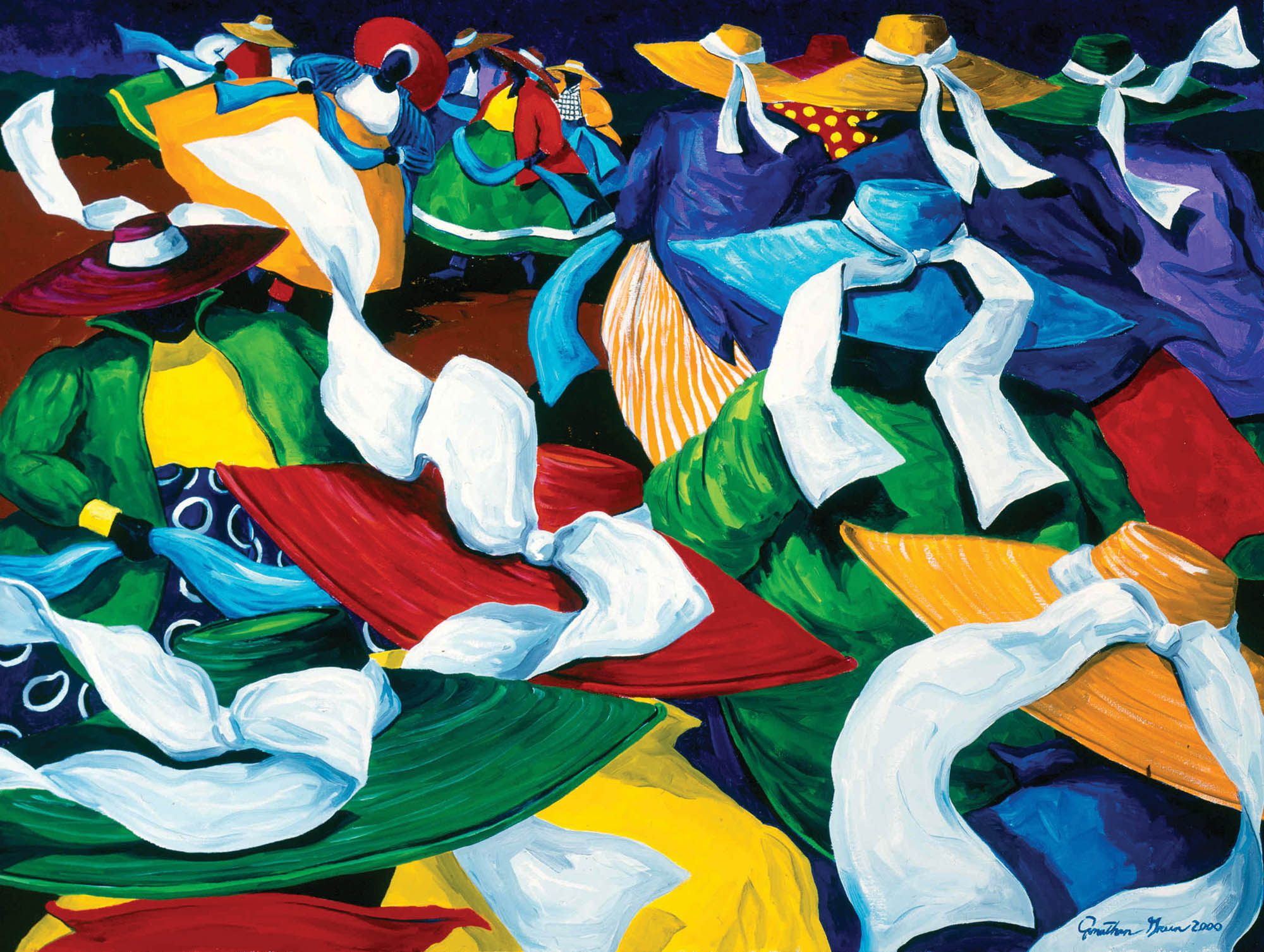
Back in his studio, adjacent to the residence Green shares with his partner, business manager, and fellow art collector Richard Weedman, Green picks up some sketches of his flower lady series underway. “My paintings are complicated to do, but the message is simple,” he says of his effort to evoke a semblance of their beauty and culture and the economic contribution the women made. “These women are talking to me.” Lucky for us—thanks to Green’s bold brushstrokes and clear vision—we are invited into the conversation.




